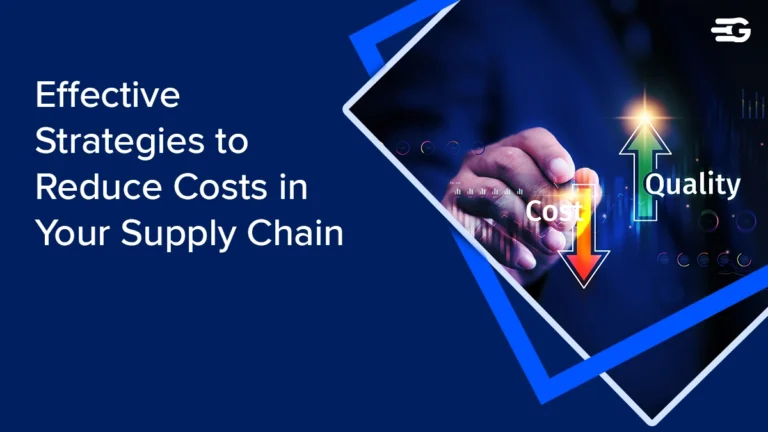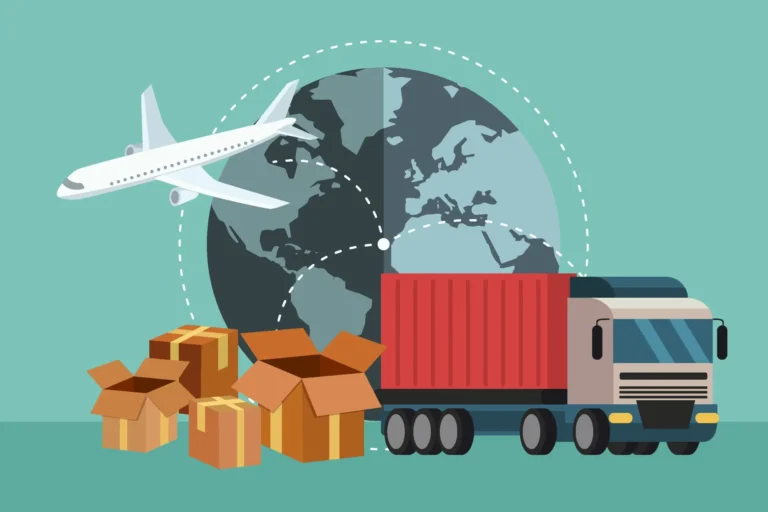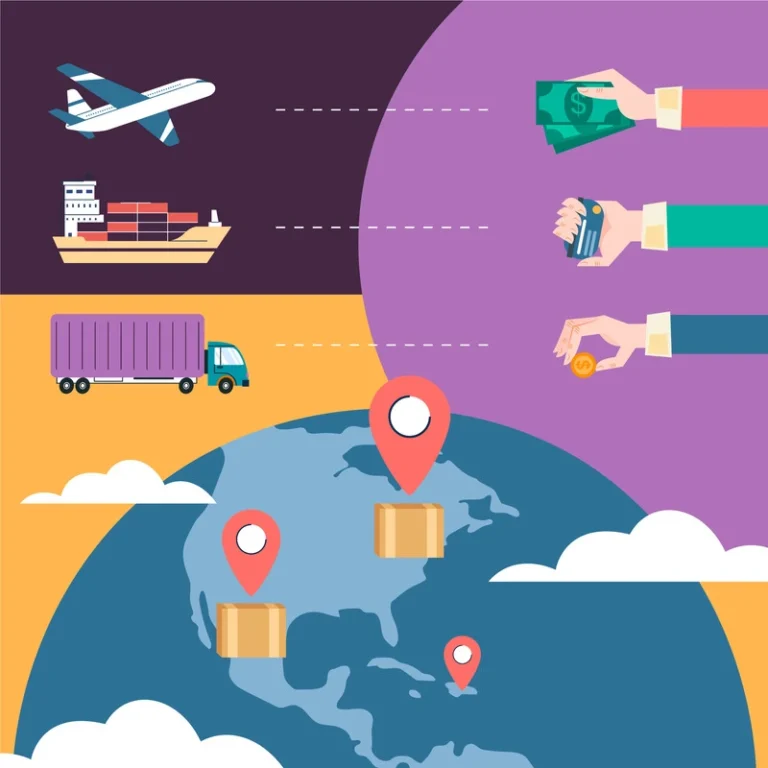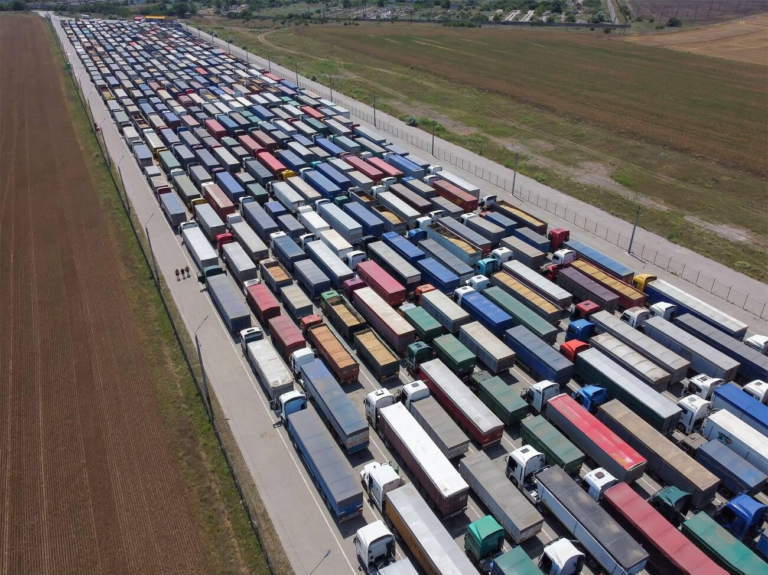Understanding Supply Chain Visibility (SCV) in 2024
Supply chain visibility (SCV) is no longer just a buzzword; it’s a business necessity in 2024. With global disruptions and rising customer expectations, companies need smarter ways to track goods, streamline operations, and meet demand. Let’s explore the importance of supply chain visibility, its features, challenges, and how to choose the right tools to boost your operations.
What is Supply Chain Visibility?
Supply chain visibility (SCV) is the ability to track products, materials, and data as they move through the supply chain. This process covers every stage, from sourcing raw materials to delivering the final product to customers.
At its core, SCV enables companies to see the real-time location, status, and movement of goods. With live updates, businesses can anticipate disruptions, identify delays, and adjust their operations on the go. This transparency is key to maintaining smooth operations and meeting customer expectations.
A reliable SCV system doesn’t just highlight issues it empowers companies to fix them quickly. By giving businesses a clear picture of their supply chain, SCV helps prevent bottlenecks and keeps processes running efficiently.
Why Is Supply Chain Visibility Critical in 2024?
Supply chain visibility is no longer a luxury; it’s a necessity. The global landscape has highlighted how disruptions like port closures, political conflicts, and unforeseen accidents can ripple through supply chains. Without visibility, businesses struggle to react, leading to delays, increased costs, and unhappy customers.
In 2024, customer expectations are at an all-time high. Consumers demand faster deliveries, real-time tracking, and seamless updates on their orders. Companies without robust SCV systems risk losing their competitive edge as delays or miscommunication can quickly erode trust.
Additionally, global challenges such as fluctuating fuel prices and environmental regulations make it vital to have a clear picture of the entire supply chain. With SCV, businesses can identify potential bottlenecks, reroute shipments, and optimize inventory to prevent costly setbacks.
Simply put, supply chain visibility keeps businesses agile, enabling them to respond faster, operate more efficiently, and exceed customer expectations.
Recent Events Showing the Need for Real-Time Supply Chain Visibility
Recent global events highlight the importance of strong visibility:
- Red Sea Shipping Routes: GeoPolitical problems and Houthi Attacks in the Red Sea is disrupting major shipping lanes since September 2023. Companies with good visibility quickly rerouted shipments, avoiding delays and extra costs.
- Baltimore Port Congestion: An accident of a ship big in size caused heavy congestion at Baltimore’s port in March 2024. Businesses with real-time visibility managed their inventory better, preventing bottlenecks and ensuring timely deliveries.
- Ningbo Port Closure: A Blast in YM Mobility in August 2024 led to a temporary shutdown of Ningbo, a key global port. Businesses with strong visibility found new shipping routes quickly, minimizing the impact on operations.
These examples show how crucial it is to see what’s happening in your today’s supply chain, especially when unexpected challenges arise.
Benefits of Visibility in Supply Chain
A strong supply chain visibility system transforms how businesses operate by enabling better planning, reducing risks, and improving customer satisfaction. Here’s how:
1. Faster and Smarter Decision-Making
Visibility gives businesses access to real-time data, helping them make informed choices quickly. Whether it’s rerouting a delayed shipment or managing sudden demand changes, companies can act with precision. This proactive approach minimizes disruptions and maximizes efficiency.
2. Fewer Delays, More Reliability
Delays in the supply chain can lead to inventory shortages, missed deadlines, and unhappy customers. With SCV, potential issues like shipment congestion or supplier delays are detected early. Businesses can resolve problems before they escalate, ensuring smoother operations and timely deliveries.
3. Significant Cost Reductions
SCV allows companies to optimize transportation routes, reduce fuel consumption, and avoid costly delays. By improving inventory management and avoiding overstocking or understocking, businesses save on storage costs and reduce waste.
4. Enhanced Customer Trust and Experience
Today’s customers expect more than just timely deliveries; they want transparency. SCV ensures accurate updates on order status, delivery timelines, and any potential delays. By meeting these expectations, businesses strengthen customer loyalty and build long-term trust.
Incorporating supply chain visibility into your operations isn’t just about improving efficiency; it’s about gaining a competitive edge, building resilience, and delivering better value to your customers.
Types of Supply Chain Visibility
Supply chain visibility varies widely depending on the industry and the complexity of operations. For enterprises and international logistics, the focus shifts to tracking, coordination, and compliance across global networks. Here’s how SCV applies in different contexts:
1. End-to-End Visibility
This type focuses on tracking products through every stage of the supply chain from raw material sourcing to final delivery. For international logistics, it ensures smooth coordination across multiple borders, reducing delays caused by customs or documentation issues.
2. Real-Time Tracking Visibility
Real-time visibility monitors the exact location and condition of goods in transit. It is especially critical for enterprises dealing with international shipments, where port congestion, rerouting, or delays can severely impact timelines.
3. Inventory Visibility
Businesses in retail and manufacturing need centralized inventory visibility to maintain stock levels across multiple locations. This prevents overstocking in some areas and shortages in others, improving demand planning and reducing storage costs.
4. Supplier Visibility
Enterprises with complex supply chains rely on supplier visibility to evaluate the performance of vendors and ensure timely deliveries. Monitoring supplier reliability helps manufacturers avoid production delays and maintain a steady flow of raw materials.
5. Condition Monitoring Visibility
This is vital for industries like healthcare and food logistics, where maintaining specific conditions, such as temperature and humidity is essential. Real-time alerts ensure that products like vaccines, medications, or perishables arrive safely and remain effective.
6. Compliance and Sustainability Visibility
For international logistics, visibility includes ensuring compliance with global trade regulations and monitoring environmental impact. Companies use SCV tools to track carbon emissions and adhere to sustainability standards, reducing penalties and building eco-friendly operations.
Each type of visibility addresses unique needs. Identifying the right combination ensures smoother operations, enhanced efficiency, and a stronger ability to navigate the complexities of global supply chains.
Challenges in Supply Chain Visibility
While supply chain visibility offers significant advantages, implementing and maintaining it presents notable challenges, especially for enterprises and international logistics. Here are the most pressing issues and their implications:
1. Ensuring Data Accuracy and Consistency
Supply chain visibility depends on accurate, real-time data. However, data inconsistencies such as outdated shipment statuses or incorrect inventory counts can lead to errors that disrupt operations. In international logistics, mismatched data across different carriers and platforms further complicates this issue. Reliable SCV systems must validate and synchronize data to avoid costly mistakes.
2. Managing Complex Supply Chain Networks
Global supply chains involve multiple stakeholders, including suppliers, manufacturers, transport providers, and customs agencies. Coordinating this web of connections is a daunting task. Delays at a single point like a port or customs checkpoint can cascade through the supply chain, disrupting schedules and increasing costs. Advanced tracking and mapping tools are essential for handling such complexity.
3. Overcoming Data Silos
Many enterprises operate across multiple systems and geographies, leading to data silos. When teams or departments don’t share critical information, visibility gaps emerge, making it harder to identify and resolve issues. Breaking down these silos requires integration across platforms and strong communication channels.
4. Adapting to Global Compliance Regulations
International logistics must navigate a maze of trade rules, tariffs, and customs regulations. Non-compliance can result in fines, delays, or shipment confiscations. Enterprises need SCV systems that not only track shipments but also automate compliance monitoring, ensuring smooth cross-border operations.
5. Addressing Security and Privacy Risks
Supply chains generate vast amounts of sensitive data, from shipment details to supplier contracts. Cybersecurity threats, such as data breaches or hacking, pose serious risks to this information. Enterprises must implement robust security measures, including encryption, secure networks, and blockchain technology, to protect their operations.
6. Handling Scalability and System Overload
As businesses grow, so do their supply chains. Scaling SCV systems to handle higher data volumes, more suppliers, and new geographies is a challenge. Legacy systems often lack the flexibility needed to expand, requiring significant investment in upgrades or replacements.
7. Real-Time Coordination Across Time Zones
International logistics operates across time zones, requiring constant coordination. Lack of alignment between suppliers, carriers, and regional teams can result in missed updates and delays. SCV solutions must bridge this gap with 24/7 tracking and automated alerts.
8. Overcoming Cost Barriers
Deploying SCV tools, especially advanced ones with AI and IoT features, can be expensive. For many businesses, the initial investment and ongoing maintenance costs are significant hurdles. However, balancing costs with long-term benefits is essential for achieving sustainable growth.
Addressing these challenges demands strategic planning, reliable technology, and strong partnerships across the supply chain. By tackling these issues head-on, enterprises can unlock the full potential of supply chain visibility.
Top Trends in Supply Chain Visibility Technology
The rapid evolution of technology is redefining how enterprises and international logistics manage supply chain visibility. Here are the key trends shaping the future of SCV:
1. Artificial Intelligence (AI) for Predictive Insights
AI has revolutionized supply chain management by enabling businesses to predict potential disruptions. AI tools analyze historical data, weather patterns, and geopolitical events to forecast risks, such as port congestion or shipment delays. This empowers enterprises to adjust their strategies proactively, ensuring minimal impact on operations.
For example, AI can predict demand surges during peak seasons, helping businesses optimize inventory and transportation. These predictive capabilities make supply chains more resilient and adaptive.
2. Blockchain for Transparency and Security
Blockchain technology creates immutable and transparent records of every transaction and shipment. In international logistics, where trust and compliance are critical, blockchain ensures that data is tamper-proof and traceable.
Enterprises use blockchain to verify supplier credentials, monitor product authenticity, and streamline customs processes. This reduces fraud, enhances accountability, and builds trust across the supply chain network.
3. Internet of Things (IoT) for Real-Time Monitoring
IoT devices have become essential for tracking goods in transit. These devices provide real-time updates on shipment location, temperature, humidity, and more. For international logistics, IoT ensures that sensitive goods like vaccines or perishables are transported under optimal conditions.
Enterprises also use IoT sensors to monitor warehouse operations, reducing inefficiencies and improving inventory accuracy. The ability to access live data helps businesses make swift, informed decisions.
4. Sustainability and Environmental Tracking Tools
As global focus shifts toward sustainability, SCV tools now include features for monitoring carbon emissions and optimizing transportation routes to reduce fuel consumption. Companies are adopting green logistics practices, using SCV systems to ensure compliance with environmental regulations.
For instance, tools that calculate emissions per shipment help businesses identify high-impact areas and implement greener strategies. These practices not only reduce costs but also enhance brand reputation.
5. Advanced Supply Chain Mapping
Supply chain mapping tools offer businesses a visual representation of their supply networks, highlighting dependencies and risks. For enterprises with global operations, mapping tools provide clarity on supplier relationships, critical nodes, and alternative routes.
This is especially useful during disruptions, such as port closures or natural disasters, where businesses can quickly identify and activate backup plans.
6. Multi-Modal Visibility Platforms
With goods moving across air, sea, rail, and road, multi-modal visibility is a game-changer. These platforms consolidate tracking data from all modes of transport into a single interface, providing enterprises with a comprehensive view of their shipments.
This ensures better coordination between carriers, minimizes delays during mode transitions, and improves overall supply chain efficiency.
7. Supply Chain Analytics for Data-Driven Decisions
Big data analytics tools process massive volumes of supply chain information to deliver actionable insights. These tools help enterprises optimize routes, improve demand forecasting, and enhance supplier performance management.
For international logistics, analytics ensure that every decision is backed by accurate, real-time data, reducing errors and inefficiencies.
What is Supply Chain Visibility Software?
Supply chain visibility software is a critical tool for enterprises and international logistics, providing businesses with the ability to track, manage, and optimize every stage of their supply chain. This software offers a unified platform to monitor shipments, manage inventory, and analyze operational performance in real time.
Key Features of SCV Software for Enterprises
- Real-Time Tracking and Monitoring
SCV software allows businesses to track shipments across multiple transportation modes air, sea, road, and rail. Real-time updates provide visibility into the location and status of goods at any point in the journey. For international logistics, this means greater control over global shipments, helping enterprises avoid delays caused by customs, transit issues, or unexpected disruptions.
- Inventory Management and Optimization
Effective inventory management is crucial for minimizing stockouts and overstocking. SCV software offers inventory visibility across multiple locations, ensuring enterprises maintain optimal stock levels. With the ability to monitor real-time stock data, companies can adjust orders and production schedules to meet demand without the risk of excess inventory or shortages.
- Risk Prediction and Proactive Alerts
Predictive capabilities are a standout feature in modern SCV software. By analyzing historical data, weather patterns, and supply chain trends, these tools can forecast potential disruptions, such as delays or cost increases, before they happen. Proactive alerts give businesses the opportunity to mitigate risks, reroute shipments, or adjust production schedules in advance.
- Supply Chain Mapping and Visualization
SCV software provides detailed visual maps of supply chains, helping businesses visualize relationships between suppliers, transport routes, and critical nodes. This helps enterprises identify vulnerabilities, monitor performance across all suppliers, and make more informed decisions, especially when dealing with complex international logistics networks.
- Financial Tracking and Cost Control
International logistics involves multiple currencies, tariffs, and complex pricing structures. SCV software integrates financial tracking to manage cash flow, optimize payment terms, and monitor costs. By providing visibility into transportation and storage expenses, businesses can identify cost-saving opportunities and improve profitability.
- Environmental Impact Analysis
With sustainability becoming a central focus, SCV software also includes environmental tracking tools. These tools help businesses monitor carbon emissions, track fuel consumption, and assess the environmental impact of logistics decisions. Enterprises can use this data to optimize routes and transportation methods, ensuring they meet sustainability goals and regulatory standards.
Need help choosing the right Supply Chain Visibility Software?
How SCV Software Benefits Enterprises and International Logistics
For enterprises operating on a global scale, SCV software is more than just a tool it’s a competitive advantage. It enhances operational efficiency, reduces costs, and provides greater supply chain resilience. By offering data-driven insights, SCV software allows businesses to make smarter decisions, respond quickly to disruptions, and continuously improve processes.
Whether it’s handling cross-border regulations, optimizing multi-modal transport routes, or ensuring real-time delivery updates, SCV software streamlines every aspect of the supply chain. For international logistics, this means smoother coordination, better forecasting, and an enhanced ability to meet customer expectations, even in the face of unpredictable global challenges.
Investing in the right supply chain visibility software provides the transparency and control needed to stay competitive and agile in today’s fast-paced, interconnected global market.
Tips for Choosing the Right Supply Chain Visibility Software
Choosing the right supply chain visibility software is a crucial decision for enterprises, especially those managing international logistics. The software you select should not only meet your current needs but also grow with your business as it expands globally. Here’s a deeper look at the factors to consider:
1. Scalability
As your business grows, your supply chain will become more complex. Scalable software can handle an increasing volume of data, more suppliers, and additional geographies without compromising performance. For international logistics, this means the software should support multiple languages, currencies, and compliance requirements across various regions.
Before selecting software, ensure it can adapt to your future needs, such as adding new features, expanding to new markets, or handling increased transaction volumes.
2. Seamless Integration
Your supply chain visibility software should integrate smoothly with your existing systems such as Enterprise Resource Planning (ERP), Warehouse Management Systems (WMS), and Customer Relationship Management (CRM) tools. In international logistics, where multiple stakeholders and systems are involved, integration is key to ensuring data flows seamlessly across platforms.
Check whether the software supports APIs or has pre-built connectors for the systems you already use. This reduces manual data entry, streamlines processes, and ensures data consistency across all platforms.
3. Security and Data Protection
With global supply chains comes a wealth of sensitive data ranging from shipping information to financial details. Security must be a top priority. Ensure the software provides robust protection through encryption, secure data storage, and access controls. For international logistics, where data often crosses borders, it’s essential that the software complies with data privacy regulations like GDPR.
Before committing, verify the software provider’s security track record and inquire about their data protection measures, especially for handling cross-border data transfers.
4. Cost vs. Value
While cost is an important consideration, it’s equally crucial to evaluate the value the software brings to your operations. Look beyond initial pricing consider the total cost of ownership, including licensing fees, maintenance, and potential training costs.
Weigh the benefits of the software, such as reduced operational inefficiencies, better decision-making, and risk mitigation. For international logistics, where delays or compliance issues can lead to significant fines, the right software can save you far more than it costs.
5. Usability and User Experience
Complex software can overwhelm your team and lead to underutilization. Choose a solution with an intuitive interface and user-friendly design. It should allow your staff to easily track shipments, analyze data, and make decisions without excessive training.
Consider testing the software with a demo or trial period to ensure it meets your usability standards. Enterprises in international logistics require software that’s not only functional but also easy for teams across different regions to use effectively.
6. Customization and Flexibility
Every supply chain is different. The best software should offer customizable features to align with your unique business processes. Whether it’s customizing dashboards, creating specific alerts, or adjusting reporting structures, flexibility ensures the software meets your exact needs.
Evaluate the level of customization offered by each software solution and whether it can accommodate specific features you may require in the future, such as adding new transport modes or changing compliance checks as regulations evolve.
7. Customer Support and Vendor Reputation
The level of customer support offered by the software provider is critical, especially when issues arise that could disrupt your operations. Choose a vendor with a strong support team and a proven track record in the industry.
Look for providers that offer 24/7 support and have an established reputation for solving issues quickly. For international logistics, time zone differences can complicate support needs, so check whether the vendor provides global support and how quickly they respond to inquiries.
Conclusion
Supply chain visibility has redefined how businesses operate. Investing in the right supply chain visibility software allows businesses to remain competitive, reduce risks, and provide seamless customer experiences. Ready to get started? Explore advanced solutions tailored for your industry and unlock new levels of efficiency today.lity in your supply chain.





